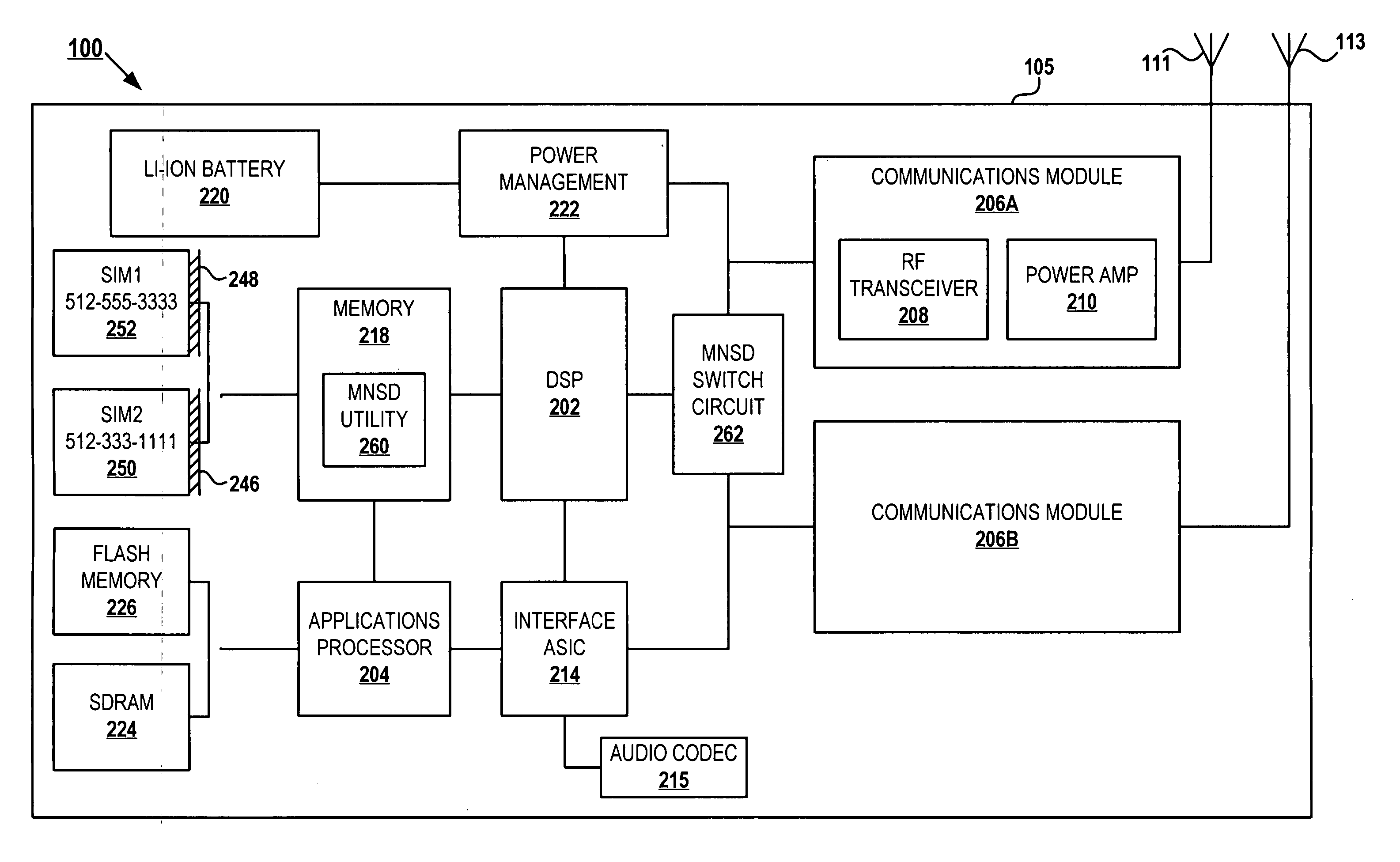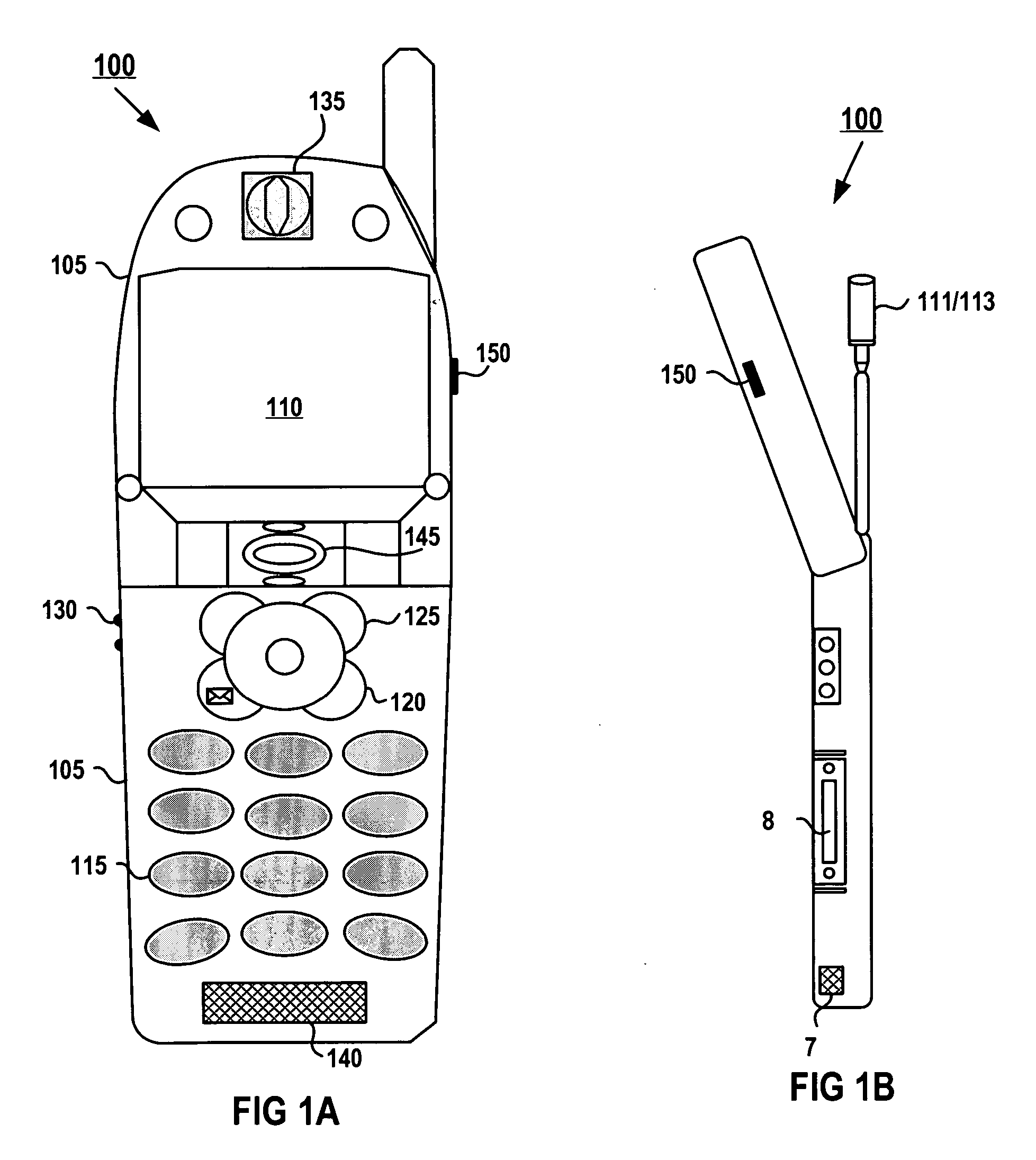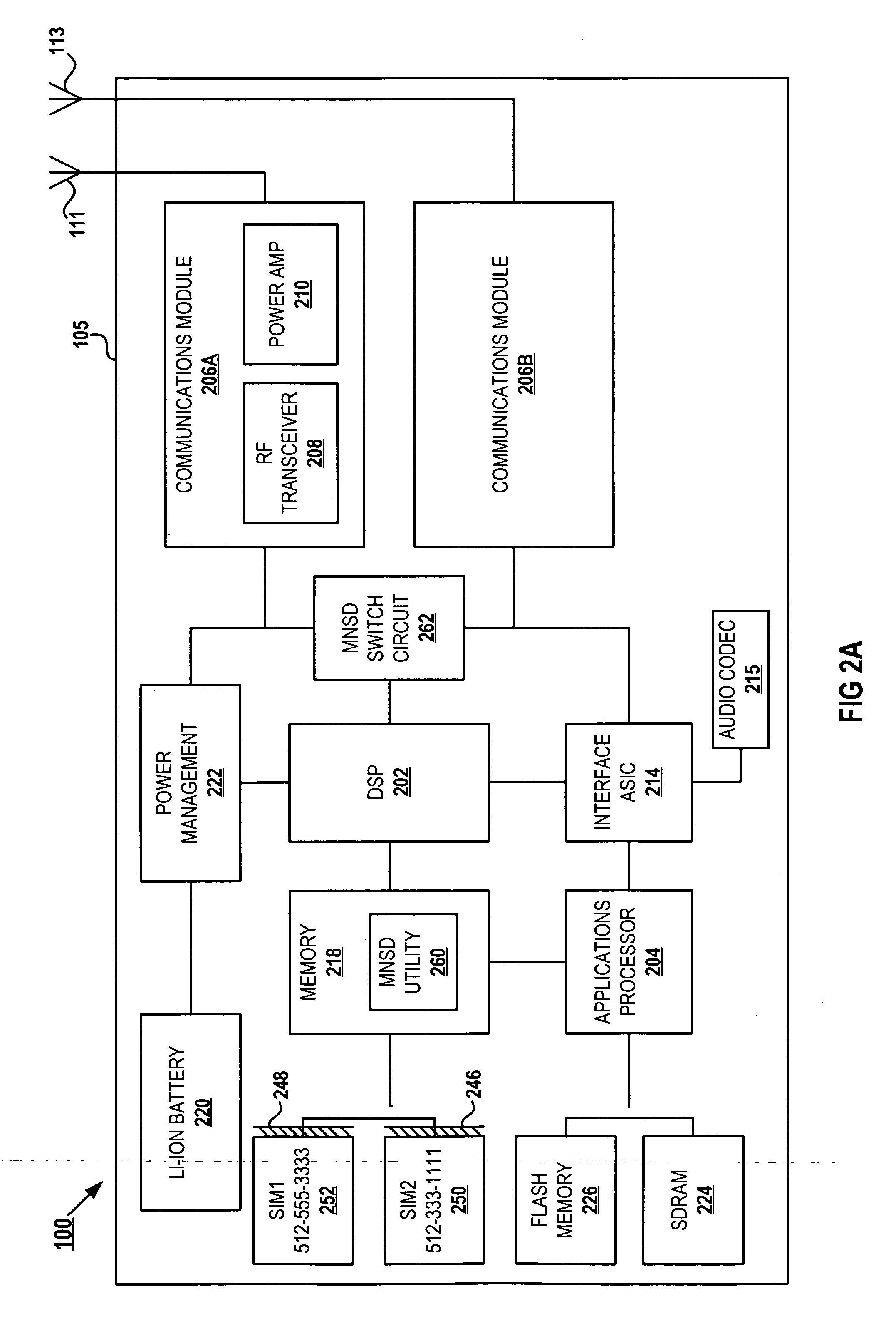Single wireless communication device with multiple, concurrent subscriber number capability
a wireless communication device and subscriber number technology, applied in the field of wireless telecommunication devices with multiple subscriber numbers, can solve the problems of increasing the difficulty of expending calls, tedious analysis, and certain business calls that need to be expensed
- Summary
- Abstract
- Description
- Claims
- Application Information
AI Technical Summary
Benefits of technology
Problems solved by technology
Method used
Image
Examples
second embodiment
[0059] As illustrated by FIGS. 2B-2E, the internal circuits are arranged in any one of a number of configurations, preferably selected to enable the least amount of circuit-to-circuit interference (or noise attenuation) given the desire for smaller, more-compact cellular phone devices. Thus, FIG. 2B illustrates one embodiment where the first and second subscriber number circuits are located in a vertical configuration relative to each other (i.e., one vertically above the other on a single circuit board, with / without overlap of main circuit components). FIG. 2C illustrates a second embodiment in which the circuits are arranged front and back of each other on separate circuit boards. With this configuration, a thin insulating barrier (or other method) may be provided to separate the main circuit components from each other and reduce cross-talk / noise effects as both circuits are operating.
[0060] As shown in FIG. 2B, in one embodiment, the circuit components are fabricated / coupled to a...
first embodiment
[0104] In order to handle voicemail features of both numbers, DNSD utility provides one of two voicemail handling functions. In the first embodiment, the DNSD utility displays voicemail for both numbers separately on the display device (see FIG. 6). That is if both numbers have voicemail stored, DNSD utility displays two separate voicemail indicators 660 / 662, one for each of the numbers. The user may then choose to enter and retrieve voicemail of one or both of the numbers.
[0105] Selection of which number to retrieve voicemail from is a MNSD utility function that enables the user to check voicemail for a specific subscriber number. As illustrated by FIG. 6, one embodiment provides two voicemail buttons, which may be separate buttons 664 / 668 or two of alphanumeric buttons (1 and 2, for example) pre-programmed to open a specific voice mailbox when depressed for a pre-set length of time. Of course, another embodiment could provide a single voicemail button (e.g., 664) that when depress...
PUM
 Login to View More
Login to View More Abstract
Description
Claims
Application Information
 Login to View More
Login to View More - R&D
- Intellectual Property
- Life Sciences
- Materials
- Tech Scout
- Unparalleled Data Quality
- Higher Quality Content
- 60% Fewer Hallucinations
Browse by: Latest US Patents, China's latest patents, Technical Efficacy Thesaurus, Application Domain, Technology Topic, Popular Technical Reports.
© 2025 PatSnap. All rights reserved.Legal|Privacy policy|Modern Slavery Act Transparency Statement|Sitemap|About US| Contact US: help@patsnap.com



